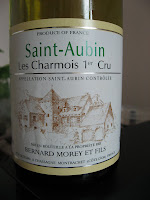Located between two First Growth estates (Lafite-Rothschild and Mouton Rothschild), Clerc Milon is a Fifth Growth, sharing with a few other Pauillac properties in that level of the 1855 classification. This chateau is located in the north-western corner of Pauillac, in the small village of Milon
In 1970, Baron Philippe de Rothschild bought the chateau, and immediately sent his team to improve the chateau, from planting new vines, selecting right varieties, and investing in latest technology. Results readily showed and many people reckoned that Clerc Milon warranted actually a Fourth Growth status with her quality.
The soils are a mixture of sand and gravel, with more clay nearer the river. Just over 43 ha of vines, with 46% Cabernet Sauvignon, 39% Merlot, 12% Cabernet Franc, 2% Petit Verdot and 1% Carmenere. The vine averages 40 years of age. Fermentation is in stainless steel tanks for 15-22 days, followed by 18 months in oak, of which 30% is new. Average production is 14000 cases per annum. No second wine is produced.
On the label, one can find two figures dancing a jig and it was a replica of a figure made by a 16th century German goldsmith. The figure is now on display in the Museum of Wine
- Chateau Clerc Milon 2004
Region / Country: Pauillac France
Vintage: 2004
Grape: 49% Cabernet Sauvignon, 37% Merlot, 11% Cabernet Franc, 2% Petit Verdot, 1% Carmenere
ABV: 13%
Price: HK$472
Tasting Date: 25 September 2011
Official website: www.bpdr.com
Wineshark Score: 90
Deep ruby color with strong and developing aromas of blackcurrant, blackberry, black cherry, chocolate, liquorice, smoke and savory, this Pauillac GCC has a high acidity balanced with high tannin level. Medium body, the wine has medium intensity flavors of blackberry, black cherry, liquorice, vegetal, cloves, slight vanilla and savory notes. Overall of good quality from the complex and intense nose, showing a strong ripe fruitiness. The palate is relatively weaker but still got a good balance between acidity and tannin, with a reasonable length. Ready to drink now but has potential for further ageing of another 3-5 years.
















































